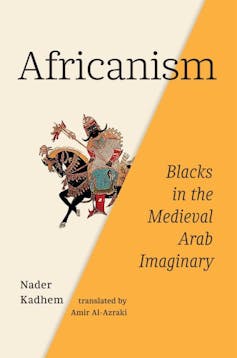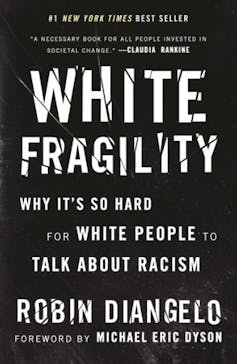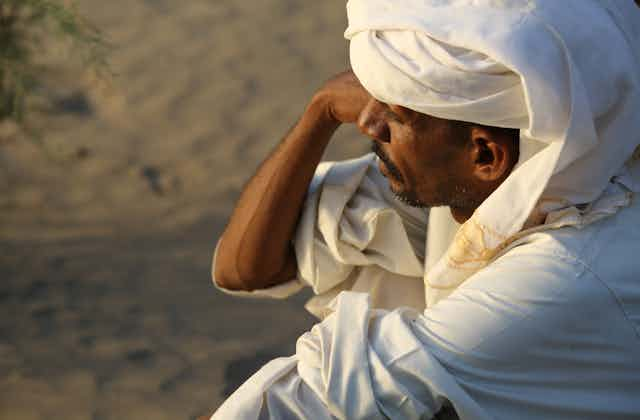In recent years, controversies have erupted in the Arab world over negative portrayals of Black people. Arabic television shows have frequently ridiculed Black people with lighter skinned actors regularly appearing in blackface.
The perpetuation of anti-Black racism within Arab societies finds its roots in what Bahraini cultural critic Nader Kadhem identifies as the dehumanization of Black people. This includes characterizations that caricature them with mental weakness, moral impotence, excessive sexual energy, foolishness and a tendency to laziness.
This derogatory depiction traces back to medieval Arab discourse, which was heavily informed by historical pre-Islamic conflicts between Abyssinians and Arabs, biblical narratives such as Noah’s curse of Ham and his descendants, and Graeco-Roman theories of medicine, geography and natural laws.
During the Islamic conquests, this discourse was employed as a tool to subjugate Black people through the slave trade, which flourished over many centuries and encompassed parts of Africa, the Middle East, Central Asia and the Indian subcontinent. During the Abbasid Caliphate, a notable event unfolded known as the Zanj revolt in southern Iraq (869-883).
Black people rose against the prevalent injustices and oppression, marking one of the largest slave revolts in history. Subsequent eras, including periods of Ottoman and European colonization, further entrenched racism through the slave trade, perpetuating notions of Black inferiority and subjecting Black people in the Arab region to continued oppression and exploitation.
Unfortunately, the legacy of this oppression and racism persists into contemporary times. While racist portrayals have faced increasing criticism in recent years, anti-Black racism endures, sustained in part by a form of white fragility.
White fragility in the Arab world
Influenced by American author Robin DiAngelo’s book, White Fragility, my observations focus on the intricate nature of this fragility and how it plays into a dynamic of racial hierarchy within Arab societies.
When exploring this subject, I wrestle with my own positioning as a “white” or lighter-skinned Arab within the Arab world, and concurrently, as a “person of colour” navigating Canadian spaces, grappling with the complexities of adopting a concept advanced by a white American scholar.
The term white fragility refers to the defensive reactions and discomfort exhibited by white people when discussing race and racism.
This fragility hinders meaningful dialogue and perpetuates systems of oppression. Not all facets of white fragility seamlessly translate into the modern Arab cultural landscape, but echoes of its influence resonate and shed light on the multifaceted nature of anti-Black racism in the Arab world.
Within the Arab context, white fragility reinforces and maintains racist views of Black people, thereby perpetuating anti-Black racism and preserving existing power inequities. As such, tackling the nuances of whiteness and its associated fragility is essential in addressing and dismantling racial hierarchies within Arab societies.
Examples of white fragility

When confronted with discussions on anti-Black racism, those with light-skinned privilege in Arab societies often display manifestations of white fragility. These can include expressions of anger, refusal, avoidance, debate, withdrawal or denial. Responses can include citing one’s own anti-racist stances, associating racism with moral judgment, invoking religion to claim inclusivity and non-racist viewpoints or appealing to nationalist sentiments that go beyond skin colour.
These defensive responses illustrate the common reactions among lighter-skinned Arabs when their racial privilege or involvement in systemic racism is called into question. Certain responses resemble those in DiAngelo’s book, while others are unique to Arab culture. Here are a few examples:
“I treat everyone the same.”
“I don’t see colour; I see people.”
“I grew up in a household that values fairness and rejects racism.”
“Some of my closest friends are Black, and I’ve known them since childhood.”
“Talking about race only creates division.”
“In Islam, there’s no distinction between Black and white. Bilal, one of the Prophet Muhammed’s companions, was Black.”
“We’re all Iraqis; race doesn’t matter.”
“We have more pressing issues to address in our society than racism.”
“It’s not about race; it’s about a person’s skills and capabilities. Judge people based on their actions, not their identity.”
“Racists are bad people and I’m a good person.”
According to DiAngelo, such responses are shaped by problematic ideologies and beliefs such as individualism, objectivity, colour blindness, meritocracy, good/bad binary and moral judgment. This defensive stance contributes to the persistence of racial inequity by obstructing constructive discourse and sabotaging attempts to confront systemic racism.
Unraveling white Arab fragility

Certain responses invoke Islam’s overarching message of inclusivity to refute presence of anti-Black racism in Arab societies.
Kadhem highlights the notion of “self-deception,” or “social hypocrisy,” wherein individuals with internalized racist views try to evade accountability by feigning tolerance and openness.
Acknowledging the prevalence of racism against Black people within Arab societies could challenge this belief, leading to discomfort and uncertainty among “white” Arabs.
It is also important to openly acknowledge and challenge taboos around interracial relationships. Claiming to have a Black or other racialized family member represents yet another manifestation of white fragility within DiAngelo’s American framework. However, this practice is notably absent in Arab societies.
Marriages between Black and white Arabs are less prevelant in the Arab world, and even when there is a Black family member, there is a reluctance to acknowledge it. There is also a tendency to ignore the Black history of Arab societies. Both of these tendencies assume whiteness as a norm, while casting Blackness as the other.
This is further buttressed by the nationalist agendas prevalent in Arab countries, which have systematically obscured the diverse makeup of their societies.
By prioritizing national identities such as Tunisian, Egyptian, Syrian or Iraqi above all else, these policies foster a form of colour blindness that effectively denies the historical realities of slavery and the complexities of racism in Arab communities.
Engaging in uncomfortable discussions about race and racism can break down barriers and foster mutual understanding. White fragility is a potent mechanism that maintains privilege. It upholds racial inequity by preventing meaningful dialogue about racism and inhibits efforts to address systemic issues.
Arabs need to work together to get past apathy and put in the effort to actively listen to and learn from the racial inequity in our societies. Only then can we address the systemic issues facing everyone, and act in allyship with movements for Black liberation.

